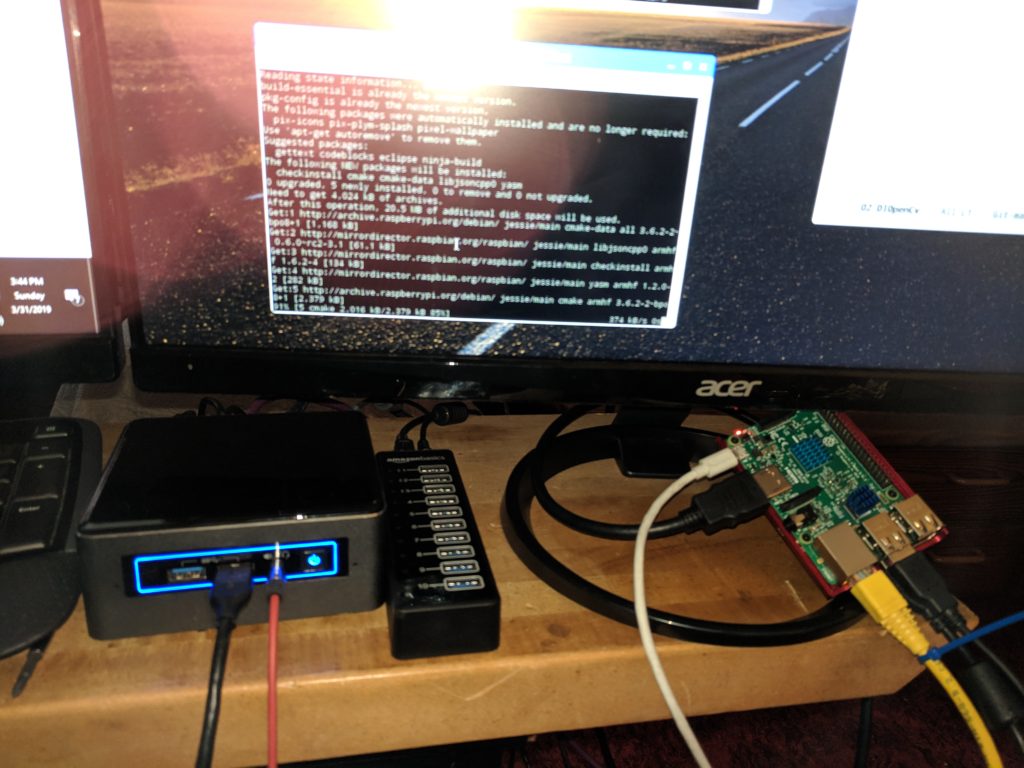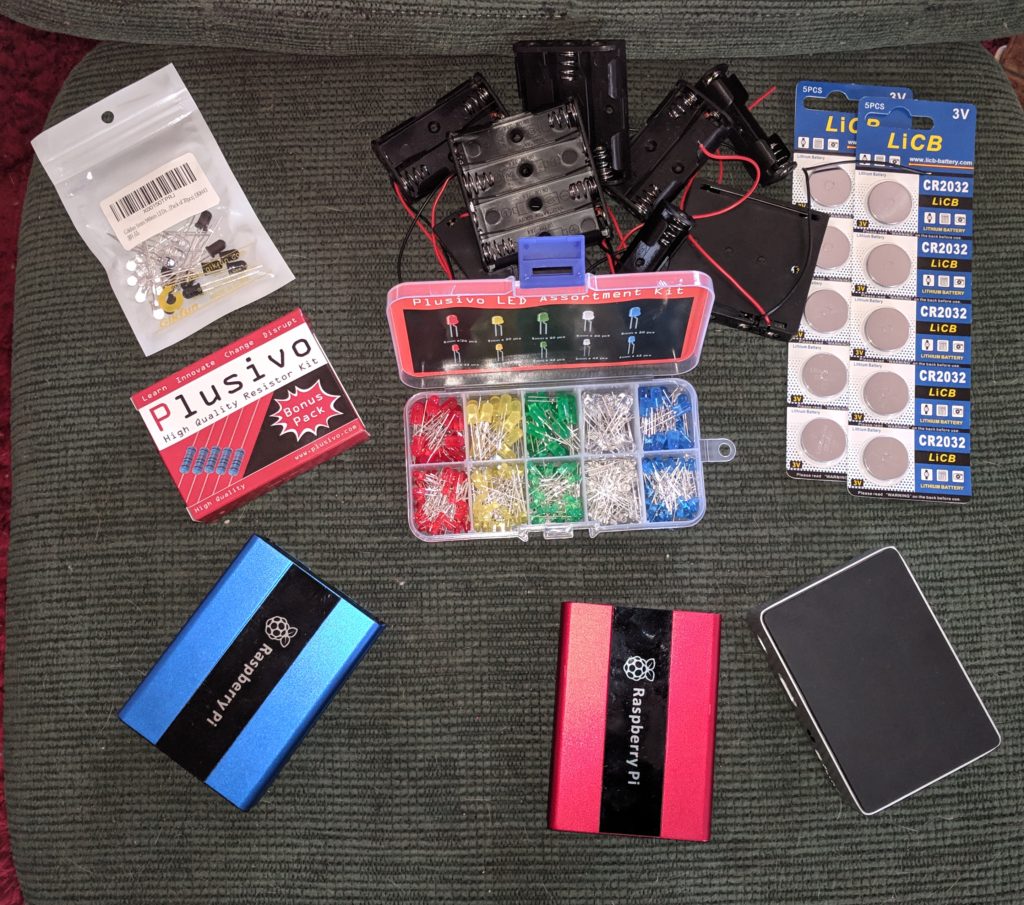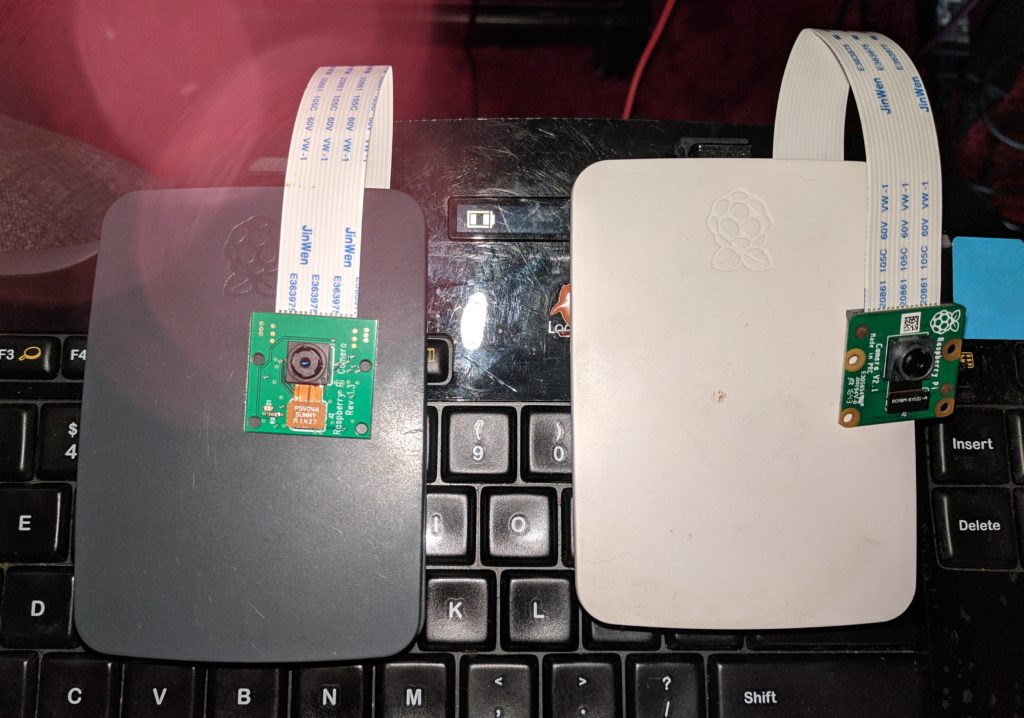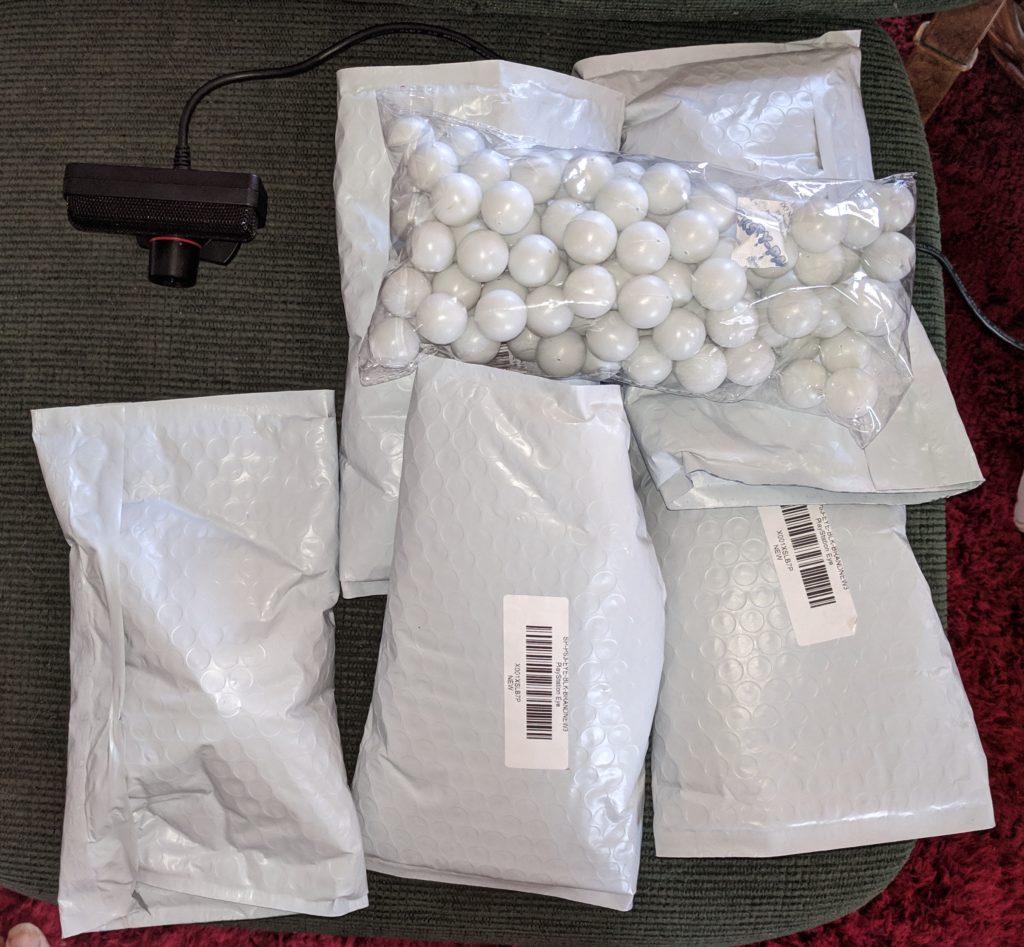I proven that the cameras can run on Ubuntu and the RPi. I found a page with classic Unix/Linux style install instructions. I’ll be working on getting this set up on my biggest RPi machine and take a look at building code to red from multiple cameras and stream the data to a host. If I can run two cameras on a single RPi then I should be set.
I’ll probably also look at doing something similar for the RPi cameras on the RPi-2 machines. That might add a couple of additional cameras to my set.
I’ll then move on to building a simple LED beacon and look at some simple camera calibration code on an appropriate host.
Trying to build the OpenCV package on one of my RPi 3 machines. I think I’m running into heat issues. I’ve switched to a board that I can keep open and has a heat sink on it. Hoping that may be enough. I’ve also dropped the build scripts onto github to make them broadly available.
Pulling packages on this machine now.
Now I’ve got a fan blowing. I see from some web pages that the RPi is supposed to warn and throttle when the temperature spikes…didn’t see that with my black and silver RPi 3…it seemed to halt completely after a short span. Keeping this one cool up front and we’ll see how this goes.
Interesting…it looks as if the scipy build is eating all available physical memory on the RPi board (882 MB of 923 total). Nothing moving on the machine…not even the mouse cursor.
Ah, reference here to bumping the swap file for the RPi.
Monday morning dawns and it appears that I have a raspberry pi that is loaded up with an installed build of OpenCV. No time this morning to test this but tonight I’ll run through a few simple tests and then probably run the same process on one of my Intel NUC machines (should go faster and easier) to get a decently powerful system up and working with the same version.




